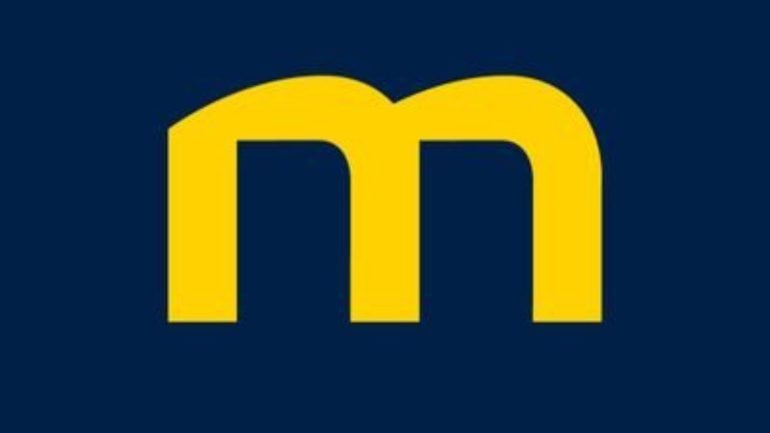
In the rapidly evolving landscape of blockchain technology, few innovations promise to fundamentally reshape how we think about transaction privacy and scalability. INTMAX Network emerges as a groundbreaking Layer 2 solution that challenges conventional approaches to blockchain scaling.
This comprehensive guide explores INTMAX’s revolutionary stateless ZK-rollup architecture, its unique approach to privacy-preserving transactions, and how it addresses critical limitations facing today’s blockchain ecosystems. Whether you’re a crypto investor, developer, or blockchain enthusiast, this article provides essential insights into a technology that could define the future of decentralized finance and private digital transactions.
Key Takeaways
- What is INTMAX Network? INTMAX Network is the world’s first stateless ZK-rollup processing 7,500 transaction batches per second with only ~5 bytes on-chain data per sender.
- Revolutionary Privacy Technology: INTMAX provides complete transaction privacy through client-side zero-knowledge proofs where only recipients learn about specific transactions.
- ITX Token and Privacy Mining: Users earn ITX tokens by depositing ETH amounts (0.1, 1, 10, or 100 ETH) to strengthen network privacy through mining participation.
- Stateless Architecture Advantage: INTMAX enables truly decentralized block production where anyone can serve as an aggregator without permissions or stake requirements.
- Real-World Applications: The network enables private payments, confidential DeFi, micropayments, and anonymous donations impossible on traditional blockchains.
- Competitive Edge: Unlike competitors requiring extensive on-chain data and centralized sequencers, INTMAX provides superior scalability with complete privacy and decentralization.
Table of Contents
What is INTMAX Network (ITX Token)?
INTMAX Network represents a paradigm shift in blockchain scaling technology, introducing the world’s first stateless, permissionless ZK-rollup with minimal on-chain data requirements. Unlike traditional Layer 2 solutions that require extensive data posting to maintain security, INTMAX achieves unprecedented scalability by shifting computation and state management entirely to the client side. The network enables private, efficient transactions while maintaining full decentralization through its innovative aggregator system.
The INTMAX architecture fundamentally differs from existing rollups by eliminating the need for global state synchronization. Instead of maintaining a shared state that all participants must access, INTMAX enables users to maintain their own transaction history and generate zero-knowledge proofs locally. This approach allows the network to process up to 7,500 transaction batches per second on current Ethereum infrastructure, with each batch capable of handling unlimited recipients without additional on-chain costs.
At the heart of this ecosystem lies privacy mining, a unique mechanism that incentivizes users to contribute to network privacy while earning rewards. Participants can deposit specific ETH amounts (0.1, 1, 10, or 100 ETH) for designated periods, strengthening the network’s anonymity set while receiving ITX token rewards. This creates a self-reinforcing cycle where privacy participation directly benefits both individual users and the broader ecosystem.
What is the Difference Between INTMAX Network and ITX Token?
| Aspect | INTMAX Network | ITX Token |
|---|---|---|
| Definition | Complete Layer 2 infrastructure and protocol | Native utility token of the ecosystem |
| Function | Provides stateless ZK-rollup technology and privacy features | Enables economic incentives and network participation |
| Components | Block builder network, privacy mining system, developer tools | Token rewards, governance rights, mining incentives |
| Role | Technological framework for private, scalable transactions | Economic model that sustains network growth |
| How to Obtain | Access through wallets, SDKs, and applications | Earn through privacy mining or purchase on exchanges |
| Primary Purpose | Enable private transactions with client-side proofs | Reward privacy contributors and facilitate governance |
This relationship mirrors other Layer 2 ecosystems where the protocol provides functionality while the native token enables participation and governance. However, INTMAX’s unique privacy mining model creates a direct connection between token rewards and network security enhancement, distinguishing it from traditional staking or validation reward systems.
What Problems Does INTMAX Network Solve?
1. The Data Availability Bottleneck
Traditional blockchains and rollups face a fundamental limitation known as the data availability problem. Every transaction must have its data publicly available for network participants to verify the current state and account balances. This requirement forces Layer 1 blockchains to store all transaction data permanently, while rollups must post complete transaction details to the underlying blockchain. The result is a severe throughput constraint that limits scalability regardless of computational improvements.
INTMAX addresses this by requiring only cryptographic commitments on-chain rather than full transaction data. Instead of posting sender, recipient, and amount information for each transaction, INTMAX aggregators submit only Merkle roots and aggregated signatures. This reduces on-chain data requirements to approximately 5 bytes per sender, regardless of how many recipients they send to, achieving sub-linear scaling that improves with network adoption.
2. Privacy and Censorship Resistance
Current blockchain systems expose all transaction details publicly, creating privacy concerns for individuals and businesses. Even privacy-focused solutions often rely on trusted setups, centralized mixers, or complex shielded pools that can become targets for censorship or regulatory pressure. Additionally, most Layer 2 solutions depend on centralized sequencers that can selectively include or exclude transactions.
INTMAX eliminates these issues through its stateless architecture where aggregators never see actual transaction contents—only salted hashes. The permissionless aggregation system means anyone can serve as an aggregator without special permissions or stake requirements, making censorship practically impossible. Transaction details are revealed only to intended recipients through peer-to-peer communication, ensuring maximum privacy without trusted third parties.
3. Scalability Without Compromise
Existing scaling solutions typically require trade-offs between decentralization, security, and scalability. Traditional rollups maintain decentralization and security but struggle with data costs and sequencer bottlenecks. Alternative approaches like sidechains improve throughput but sacrifice security guarantees or require trusted validators.
INTMAX achieves scalability without these compromises through its client-side proof system. Users generate their own zero-knowledge proofs for transactions, eliminating computational bottlenecks at the protocol level. The stateless design allows multiple aggregators to operate in parallel without coordination, creating horizontal scalability that grows with network usage rather than hitting predetermined limits.

What is The Story Behind INTMAX Network?
INTMAX Network emerged from rigorous academic research led by Erik Rybakken and Leona Hioki at Intmax, in collaboration with researchers from the University of Porto and Nethermind’s formal verification team. The project represents a significant evolution from earlier scaling approaches, building upon lessons learned from Plasma Prime, Springrollup, and the original Intmax design.
The development team recognized that previous attempts at blockchain scaling often required trusted components or complex coordination mechanisms that created single points of failure. Through extensive research into authenticated dictionaries, signature aggregation, and zero-knowledge proof systems, they developed a fundamentally different approach that eliminates these dependencies entirely.
A crucial milestone was the formal verification of INTMAX’s security properties using the Lean theorem prover, conducted by Nethermind’s formal verification team. This mathematical proof guarantees that the protocol maintains security even under adversarial conditions, providing unprecedented confidence in the system’s robustness. The testnet deployment on Ethereum’s Sepolia network in December 2024 demonstrated the practical viability of these theoretical advances.

Key Features and Advantages of INTMAX Network
1. Stateless ZK-Rollup Architecture
INTMAX’s core innovation lies in its stateless design where no participant—including aggregators—needs to maintain or understand the global network state. Users construct transaction batches locally, share only cryptographic hashes with aggregators, and receive inclusion proofs in return. This eliminates the bottlenecks associated with state synchronization and enables truly decentralized block production.
The architecture supports unlimited recipients per transaction batch without additional on-chain costs. A single sender can distribute tokens to thousands of recipients in one batch, paying only the fixed cost of approximately 5 bytes of on-chain data. This asymmetric scaling property becomes more efficient as adoption increases, inverting the typical relationship between usage and per-transaction costs.
2. Client-Side Zero-Knowledge Proofs
Rather than relying on centralized provers or complex verification systems, INTMAX enables users to generate their own zero-knowledge proofs for transaction validity. These proofs demonstrate sufficient balance and proper authorization without revealing transaction amounts, recipients, or account balances to observers.
The client-side approach eliminates computational bottlenecks at the protocol level while providing maximum privacy. Recipients verify incoming transactions using zero-knowledge proofs and Merkle inclusion paths provided directly by senders, creating a peer-to-peer verification system that scales horizontally with network usage.
3. Permissionless Aggregation System
Anyone can serve as an INTMAX aggregator without staking requirements, special permissions, or coordination with other network participants. Aggregators simply collect transaction hashes, construct Merkle trees, and facilitate signature aggregation—they never access actual transaction contents or maintain state information.
This design prevents censorship and eliminates single points of failure common in other Layer 2 solutions. Multiple aggregators can operate simultaneously without conflicts, and users can switch between aggregators or even run their own aggregation services if existing options become unavailable or untrustworthy.
4. Privacy Mining Innovation
INTMAX introduces privacy mining as a novel incentive mechanism that strengthens network privacy while rewarding participants. Users deposit specific ETH amounts (0.1, 1, 10, or 100 ETH) for designated periods, expanding the network’s anonymity set and earning ITX token rewards in return.
This system creates positive feedback loops where privacy participation directly benefits all network users while providing economic incentives for long-term commitment. Unlike traditional mining that consumes energy for computational work, privacy mining contributes directly to the network’s core value proposition of private, untraceable transactions.
INTMAX Network Real-World Use Cases
1. Private Payment Systems
INTMAX enables the development of payment applications that provide complete transaction privacy without sacrificing efficiency or decentralization. Unlike traditional blockchain payments where all transaction details are publicly visible, INTMAX payments reveal information only to intended recipients while maintaining cryptographic proof of validity.
This capability supports various payment scenarios from retail transactions and peer-to-peer transfers to salary payments and subscription services. The unlimited recipients feature allows businesses to process bulk payments efficiently—such as payroll distribution to hundreds of employees—while maintaining individual privacy and minimizing transaction costs.
2. Decentralized Finance Privacy
Traditional DeFi protocols expose all trading activity, position sizes, and strategic decisions to public scrutiny, creating opportunities for front-running and copycat strategies. INTMAX enables the development of private DeFi applications where users can trade, lend, and provide liquidity without revealing their strategies or holdings to competitors.
This privacy protection is particularly valuable for institutional users and high-net-worth individuals who require confidentiality for their financial activities. Private DeFi on INTMAX could support confidential trading protocols, anonymous lending platforms, and privacy-preserving yield farming strategies that maintain competitive advantages.
3. Micropayments and Content Monetization
The minimal on-chain cost structure makes INTMAX ideal for micropayment applications that are economically unfeasible on other blockchain networks. Content creators can receive small payments for articles, videos, or digital goods without prohibitive transaction fees consuming the payment value.
Streaming payment models become practical where users pay per second of content consumption or per API call. The privacy features also protect both content consumers and creators from having their consumption patterns or revenue streams publicly analyzed by competitors or advertisers.
4. Anonymous Donations and Fundraising
INTMAX supports completely anonymous donation platforms where contributors can support causes, projects, or individuals without revealing their identities or donation amounts. This is particularly valuable for politically sensitive causes, whistleblower protection, or situations where donor privacy is essential for safety reasons.
The unlimited recipients feature enables efficient distribution of donated funds to multiple beneficiaries while maintaining donor anonymity and minimizing administrative costs. Organizations can demonstrate fund distribution transparency through zero-knowledge proofs without compromising donor privacy.

INTMAX Network Tokenomics
INTMAX Network’s ITX token serves as the native utility token, with users able to earn ITX through privacy mining rewards. Users earn ITX tokens by depositing specific ETH amounts (0.1, 1, 10, or 100 ETH) for designated periods to strengthen the network’s anonymity set. Additional tokenomics details including total supply and distribution schedules are not specified in current documentation.
Functions of the ITX Token
ITX token functionality includes the privacy mining system rather than traditional tokenomics mechanisms found in other blockchain projects. The token serves specific utility functions within the INTMAX ecosystem, though comprehensive functionality appears to be developing alongside the broader network architecture.
1. Privacy Mining Rewards
ITX tokens are distributed to users who participate in privacy mining by depositing ETH for specified periods. This system rewards users for contributing to the network’s anonymity set, creating economic incentives for privacy enhancement. The specific deposit tiers (0.1, 1, 10, or 100 ETH) suggest a structured reward system, though exact reward calculations are not detailed in current documentation.
2. Network Incentivization
ITX tokens support block builder operations and other network infrastructure providers, creating sustainable incentives for decentralized network maintenance. This includes rewards for aggregators, infrastructure operators, and community members who contribute to ecosystem development through various forms of participation.
3. Future Governance Utility
While not explicitly detailed in current documentation, the token structure suggests potential governance functionality for protocol upgrades, parameter adjustments, and community decision-making processes. This aligns with standard practices for Layer 2 network tokens, though specific governance mechanisms await further development.
The limited scope of currently defined token functions reflects INTMAX’s development priorities, focusing on core protocol security and functionality before implementing comprehensive economic mechanisms. This approach suggests that additional token utilities may emerge as the network approaches mainnet deployment and broader ecosystem adoption.

The Future of INTMAX Network
INTMAX Network’s development roadmap focuses on expanding its unique stateless architecture to support broader blockchain adoption while maintaining its core privacy and scalability advantages. The project’s academic foundation and formal verification approach position it to address fundamental blockchain limitations that other solutions cannot solve through incremental improvements.
Near-term development priorities include enhancing developer tools and SDK functionality to facilitate application building on INTMAX’s unique architecture. The client SDK and CLI tools represent early infrastructure that will expand to support more programming languages and integration patterns as the ecosystem matures.
The network’s design anticipates significant scalability improvements from Ethereum’s roadmap, particularly EIP-4844 and future data availability enhancements. While INTMAX already achieves superior efficiency on current infrastructure, these Ethereum upgrades could enable the network to process 320,000+ senders per second while maintaining minimal costs and maximum privacy.
Long-term vision includes establishing INTMAX as the standard for private, scalable blockchain interactions across various industries requiring confidential transactions. The combination of formal security guarantees, practical efficiency, and true decentralization positions INTMAX to capture use cases that current blockchain solutions cannot adequately serve.

INTMAX Network VS Competitors
INTMAX Network operates in the competitive Layer 2 scaling landscape alongside solutions like Polygon zkEVM, Arbitrum, Optimism, and privacy-focused projects like Aztec Network. However, INTMAX’s stateless architecture and client-side proof system create fundamental differentiators that address limitations present in competing approaches.
Traditional rollup solutions like Polygon zkEVM and Arbitrum maintain compatibility with existing Ethereum applications but require extensive on-chain data posting and centralized sequencers. While these solutions achieve moderate scalability improvements, they inherit bottlenecks from data availability requirements and single points of failure from sequencer architecture. INTMAX eliminates both limitations through its stateless design and permissionless aggregation.
Privacy-focused competitors like Aztec Network provide transaction confidentiality but may have different architectural approaches and limitations compared to INTMAX’s stateless design. INTMAX achieves superior privacy without trusted components while supporting unlimited recipients per transaction and maintaining full composability with the broader blockchain ecosystem.
INTMAX’s key advantages over competitors include: truly decentralized block production without sequencer dependencies, sub-linear scaling that improves with adoption rather than hitting capacity limits, complete transaction privacy without trusted setups or complex ceremonies, and formal security verification providing mathematical guarantees rather than empirical security assumptions.
The stateless architecture represents a fundamental innovation that competing projects cannot easily replicate without redesigning their core protocols. This creates a sustainable competitive advantage for INTMAX in applications requiring both privacy and scalability without centralization trade-offs.
Conclusion
INTMAX Network represents a fundamental breakthrough in blockchain technology, solving long-standing challenges in scalability, privacy, and decentralization through its innovative stateless ZK-rollup architecture. By shifting computation to the client side and enabling permissionless aggregation, INTMAX achieves unprecedented efficiency while maintaining the security guarantees and decentralization principles that make blockchain technology valuable.
The network’s unique approach to privacy mining creates sustainable economic incentives aligned with network security enhancement, distinguishing it from traditional proof-of-stake or mining mechanisms. Combined with formal verification of core security properties and practical deployment on Ethereum infrastructure, INTMAX offers a compelling solution for applications requiring both privacy and scalability.
As blockchain adoption continues expanding into areas requiring confidential transactions and efficient scaling, INTMAX’s architecture positions it to capture significant market opportunities that existing solutions cannot adequately serve. The project’s academic foundation, innovative design, and practical implementation make it a noteworthy development in the evolution of blockchain technology.
Join MEXC and Get up to $10,000 Bonus!
Sign Up


